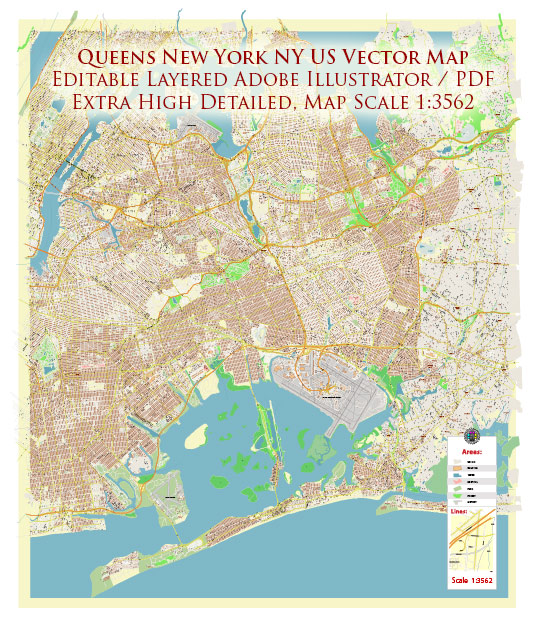Queens, a borough of New York City, is a diverse and dynamic area with a wide range of architectural styles and influences. Its architecture reflects the borough’s history, cultural diversity, and urban development. Here’s a brief description of the architectural characteristics you can find in Queens, New York:
- Residential Architecture: Queens boasts a variety of residential architecture, from historic brownstones and row houses in areas like Astoria, Sunnyside, and Jackson Heights to more modern apartment buildings and high-rises in neighborhoods like Long Island City. Queens is also known for its suburban-style single-family homes with diverse designs, including Tudor, Colonial, and Mediterranean Revival styles.
- Cultural Diversity: Queens is one of the most ethnically diverse places in the world, and this diversity is reflected in its architecture. You can find religious structures of various faiths, each with its architectural character. For example, there are mosques, Hindu temples, Greek Orthodox churches, and synagogues, to name a few.
- Historic Architecture: Some parts of Queens have well-preserved historic districts, such as Queensbridge, with buildings dating back to the 19th and early 20th centuries. These areas showcase architectural styles like Neo-Grec, Beaux-Arts, and Art Deco.
- Art Deco Influence: Queens has several notable Art Deco structures, including the iconic former TWA Flight Center at JFK Airport, designed by architect Eero Saarinen, and the New York State Pavilion from the 1964 World’s Fair, which showcases this distinctive architectural style.
- Industrial Architecture: In areas like Long Island City, you can find former industrial spaces that have been repurposed into modern lofts and offices. These buildings often feature exposed brick, large windows, and a blend of historic and contemporary design elements.
- Modern Developments: Queens has seen significant growth in modern architectural developments, particularly in neighborhoods like Long Island City and Flushing. High-rise apartment buildings and commercial spaces have become more prevalent, often characterized by sleek, glass facades and contemporary designs.
- Public Buildings: Queens is home to several impressive public buildings, including the Queens Museum, the Queens Library at Flushing, and the Queens Botanical Garden Visitor Center. These structures are known for their architectural innovation and cultural significance.
- Parks and Green Spaces: Queens has numerous parks and green spaces, and some, like Flushing Meadows-Corona Park, showcase notable architectural elements like the Unisphere, designed for the 1964 World’s Fair, and the Queens Museum, which is housed in a building originally constructed for the fair.
- Artistic Expression: Queens also features street art and murals that add a unique dimension to its urban landscape, contributing to its vibrant and ever-changing visual character.
In summary, the architecture of Queens, New York, is a rich tapestry of styles, reflecting its history, cultural diversity, and the evolving nature of this borough. It’s a place where historic and contemporary elements coexist, creating a unique and visually interesting environment.


 Author: Kirill Shrayber, Ph.D.
Author: Kirill Shrayber, Ph.D.